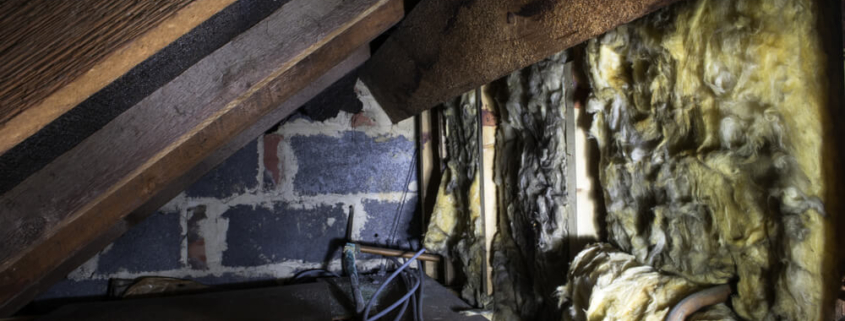Blaylock v. DMP 250 Newport Center LLC: California Court Affirms Defense Judgment in Crawl Space Injury Case
Background
In a closely watched decision issued in May 2023, the California Court of Appeal examined the merits of the concealed hazard exception to the Privette doctrine in the context of a workplace injury lawsuit. The court affirmed a defense judgment in favor of a property owner who had been sued by an HVAC technician injured after falling through an access panel in a commercial building’s crawl space. Travis Blaylock v. DMP 250 Newport Center, LLC, et al. demonstrates the heavy burden plaintiffs must meet under Privette to hold landowners liable for on-the-job injuries suffered by contractors’ employees.
The plaintiff, Travis Blaylock, was a project manager for Air Control Systems, Inc. (ACS), an HVAC contractor in southern California. In October 2018, Blaylock suffered serious injuries after falling approximately 10 feet through a plywood access panel while working in a cramped plenum crawl space at an office building in Newport Beach, California owned by DMP 250 Newport Center, LLC and managed by DMP Management, LLC (together, DMP). Blaylock had been dispatched to the crawl space to investigate an airflow issue for one of DMP’s tenants.
Blaylock accessed the crawl space through a door on the roof. He was using his cell phone flashlight to illuminate the dark, confined space between the roof and ceiling where the building’s HVAC ductwork was located. As Blaylock traversed the area, he stepped onto what appeared to be a plywood panel flush with the other sections of plywood covering parts of the crawl space “floor.”
In actuality, the panel was covering an opening that provided access to the crawl space from a storage room one story below. Unaware that the panel was not meant to bear weight, Blaylock plunged through the opening and crashed onto the floor of the storage room, suffering severe injuries.
After his fall, it became clear the access panel was intended to allow entry into the crawl space from the storage area. Importantly, DMP had no involvement in the original design or construction of the building and denied having any knowledge of the panel or its hazardous nature. DMP only became aware of the access point because of Blaylock’s accident.
Blaylock sued DMP for premises liability and negligence, alleging the unmarked access panel constituted a concealed hazard. DMP moved for summary judgment, arguing that under California’s Privette doctrine, it could not be held liable for Blaylock’s on-the-job injury because he was working for an independent contractor over whom DMP exercised no control.
The trial court agreed and granted summary judgment in DMP’s favor, finding no triable issues as to the concealed hazard exception set forth in Kinsman v. Unocal Corp. (2005) 37 Cal.4th 659. Blaylock appealed.
The court of appeal affirmed, holding that Blaylock failed to demonstrate a triable issue because even if DMP should have known the access panel existed (based on its potential visibility from the storage room below), there was no evidence DMP actually knew or should have known the panel presented a hazard to HVAC workers inside the crawl space. The court reiterated the principle that under Privette, a landowner implicitly delegates responsibility for job safety to an independent contractor.
It is important to note that the court rejected Blaylock’s assertion that the inadequate lighting in the crawl space rendered the access panel a concealed hazard. The court stated it was incumbent on ACS, not DMP, to ensure proper illumination within the workspace. Further, had ACS workers conducted a reasonable inspection of the crawl space, they would have recognized that the access panel was unsafe to walk on since it was affixed to the bottom of the ceiling joists rather than resting atop them like the other sections of plywood flooring.
By holding that DMP had no actual or constructive knowledge of the hazardous condition from the perspective of those working in the crawl space, the Court underscored that when applying the concealed hazard exception, the property owner’s knowledge is paramount. The contractor’s ability to discover the danger through inspection is a secondary consideration.
Key Takeaways
- The Blaylock case involves a workplace injury lawsuit brought by an HVAC technician who was injured after falling through an access panel in a crawl space while servicing an air conditioning system.
- The court applied the Privette doctrine, which limits a property owner’s liability for on-the-job injuries sustained by employees of an independent contractor. Under this doctrine, the property owner is not liable if they do not retain control over the work.
- There is an exception to the Privette doctrine when the property owner knows or should know of a concealed hazardous condition that the contractor does not know about and cannot reasonably discover.
- The court found the access panel was not a concealed hazard because the lighting conditions were the contractor’s responsibility, and a reasonable inspection by the contractor would have revealed the unsafe nature of the panel.
- The property owner did not know nor have reason to know the panel presented a hazard to the contractor’s employees. Therefore, the exception did not apply and the Privette doctrine shielded the property owner from liability.
- The key issues were the defendant’s knowledge of the hazardous condition and whether it was concealed from the contractor. Since there was no evidence on these issues, summary judgment for the defendant was affirmed.
Summary
The Blaylock decision demonstrates that under California’s Privette doctrine, a property owner is generally not liable for injuries suffered by a contractor’s employee on a worksite unless the owner concealed a known hazardous condition. This premises liability case illustrates that to overcome the Privette rule of nonliability, an injured plaintiff must show the property owner actually knew of a hidden danger that the contractor could not have reasonably discovered through inspection.

 Blaylock v. DMP 250 Newport Center LLC: California Court Affirms Defense Judgment in Crawl Space Injury Case
Blaylock v. DMP 250 Newport Center LLC: California Court Affirms Defense Judgment in Crawl Space Injury Case
 Natural Disaster Property
Natural Disaster Property  Beebe v. Wonderful Pistachios: California Court Lowers Causation Bar in Bird Droppings Lawsuit
Beebe v. Wonderful Pistachios: California Court Lowers Causation Bar in Bird Droppings Lawsuit